All You Need To Know About Specialized’s 2018 Epic
SA EXCLUSIVE: The latest iteration of one of the world’s most successful XC dual suspensions is lighter, smarter and faster, and joins the likes of the Scott Spark and Cannondale Scalpel in the pantheon of ‘New Generation’ race machines.
SA EXCLUSIVE: The latest iteration of one of the world’s most successful XC dual suspensions is lighter, smarter and faster, and joins the likes of the Scott Spark and Cannondale Scalpel in the pantheon of ‘New Generation’ race machines. – By Oli Munnik
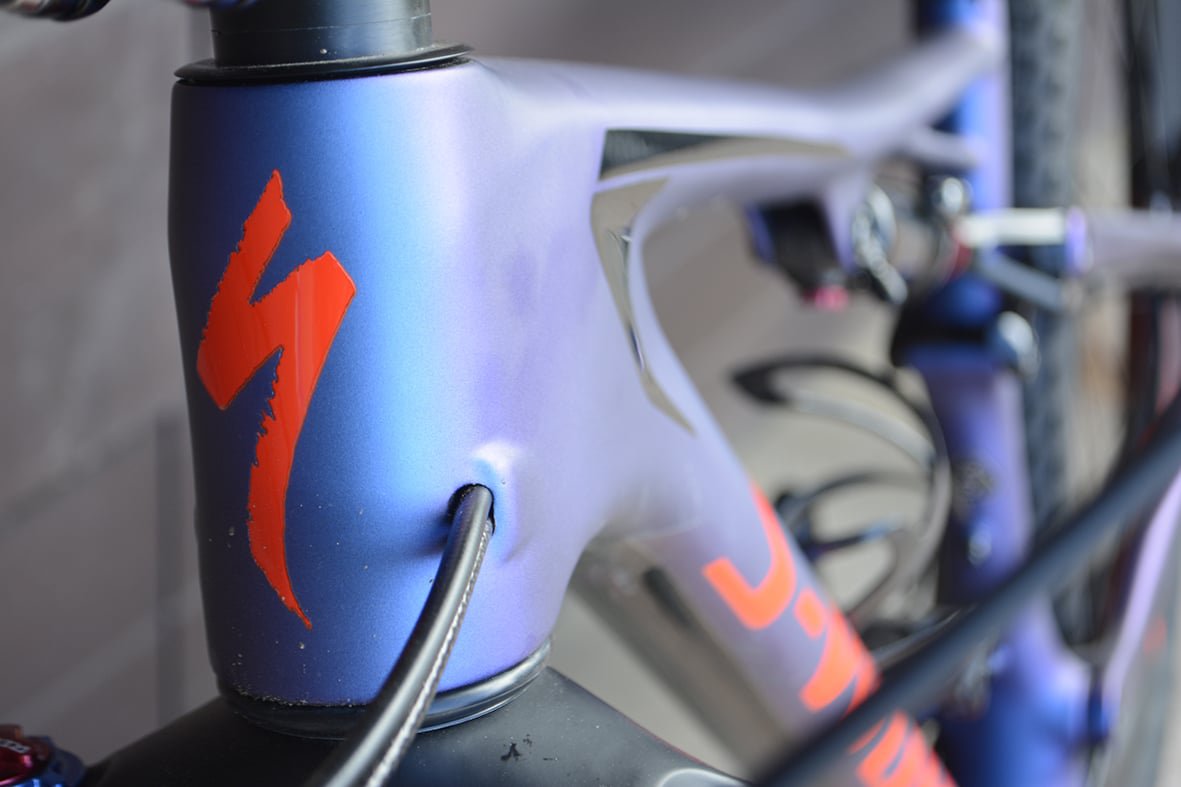
At first glance, you may be surprised – or even slightly disappointed – that the new Epic looks much like its predecessor. However, after riding the bike on the East Coast of America a few weeks before its international launch on 1 July, we found that the devil is in the detail. Rest assured: the 2018 Epic is a different animal altogether.
Still, it stays true to its heritage as the first-ever dual suspension to win XCO World Champs (2008, in Val di Sole). Brian Gordon, Epic Product Manager, stresses that while handling has been dramatically improved, Specialized’s engineering focus has always remained firmly on maintaining this bike’s reputation as the fastest in the world.
Before we get into how it rides, let’s delve into that detail.
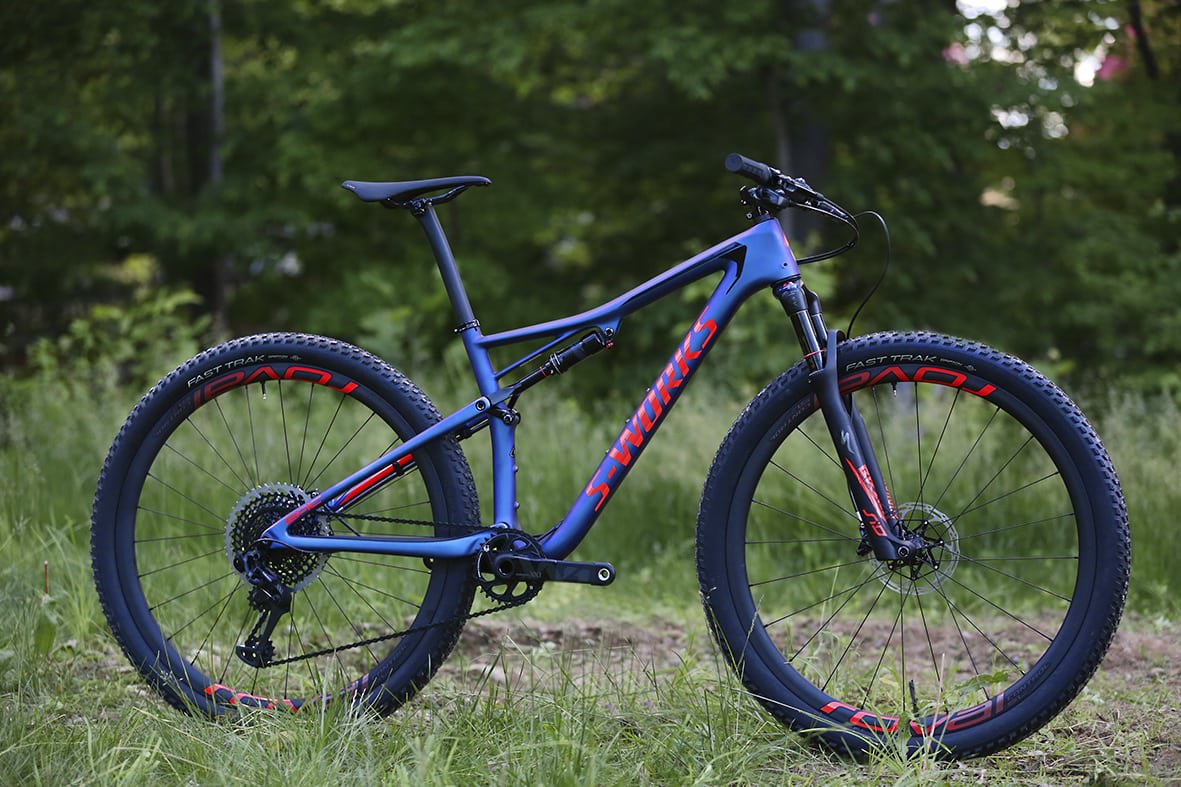
It’s Lighter
Let’s not forget that amid today’s hype around longer and slacker geometries, the Epic still falls into the ‘ultimate XC and Marathon race machine’ category. In this high-speed realm, weight loss is still regarded as the holy grail of marginal gains.
With the S-Works frame losing a significant 345g and the Comp Carbon and Expert frames an astonishing 525g apiece, the new Epic frame is incredibly competitive on the scales.
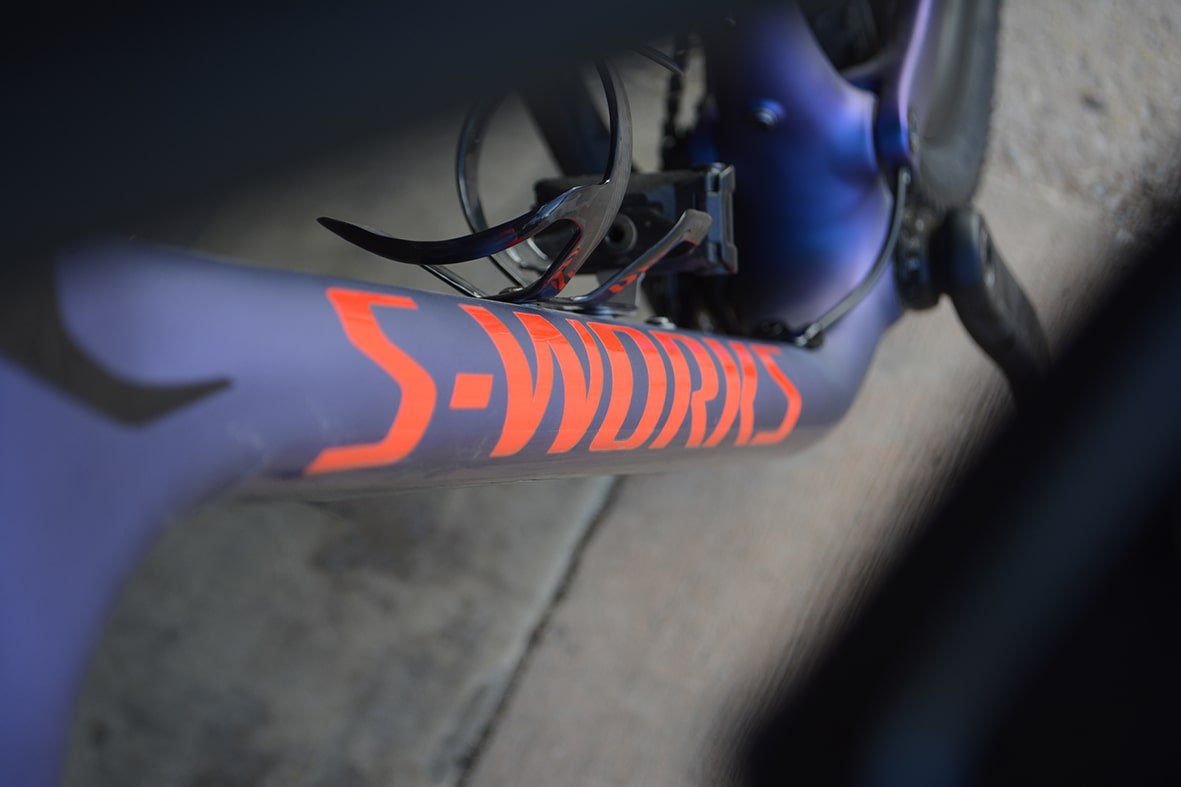
For the weight weenies out there: the S-Works frame weighs in at 1900g, including all shock hardware and paint. With his eye for detail, Gordon was able to rattle off for us the individual weights of the frame’s hardware: seat collar 15g, rear axle 33g, derailleur hanger 20g, and shock, extension, hose and brain 525g.
In terms of complete builds: the S-Works will weigh in the region of 9.6kg for a large, and an Expert +-10.5kg.
Rider-First Engineered
The Epic is Specialized’s first mountain bike to receive its Rider-First Engineered frame construction, in which the carbon lay-up is optimised to give each frame size (and therefore riders of all sizes) identical ride characteristics. Gordon also claims the process helped to save weight. Aesthetically, the tubing has been smoothed out, taking its cues from the new Epic hardtail released earlier this year.
In 2018, Epic alloy models will be built with D’Aluisio Smartweld technology – originally introduced on Specialized’s Allez road bikes – that improves frame strength while keeping weight down.
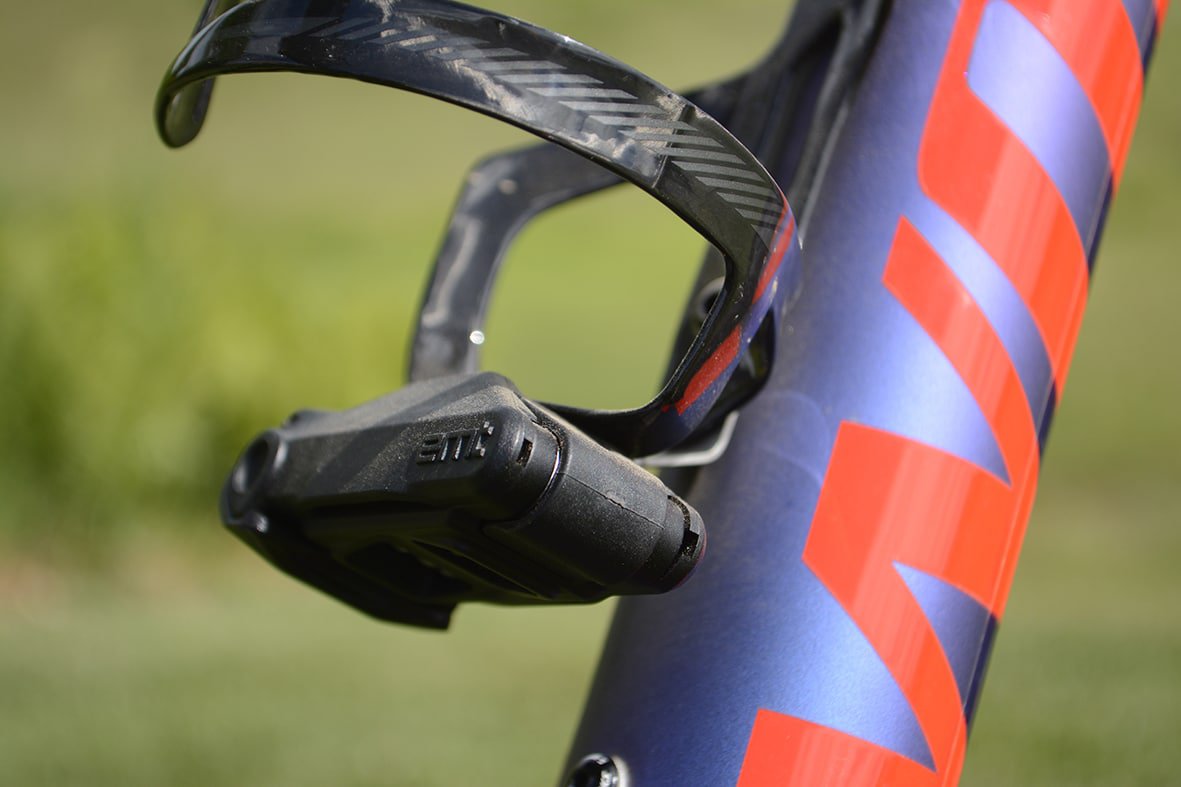
No More Integrated EMT Tool
Sadly, the new Epic loses the top-tube-integrated EMT multi-tool; Gordon says its removal allowed them to shave off a few grams, and to blow out the top tube’s diameter for added stiffness. Now you’ll have to store your EMT on the down tube, either in a SWAT box or below a Zee II bottle cage, as shown.
No More Era
Another somewhat unexpected move was the discontinuation of the women-specific Era; Specialized favours the non-gender-specific chassis approach, with women’s models sporting tuned suspension and contact points.
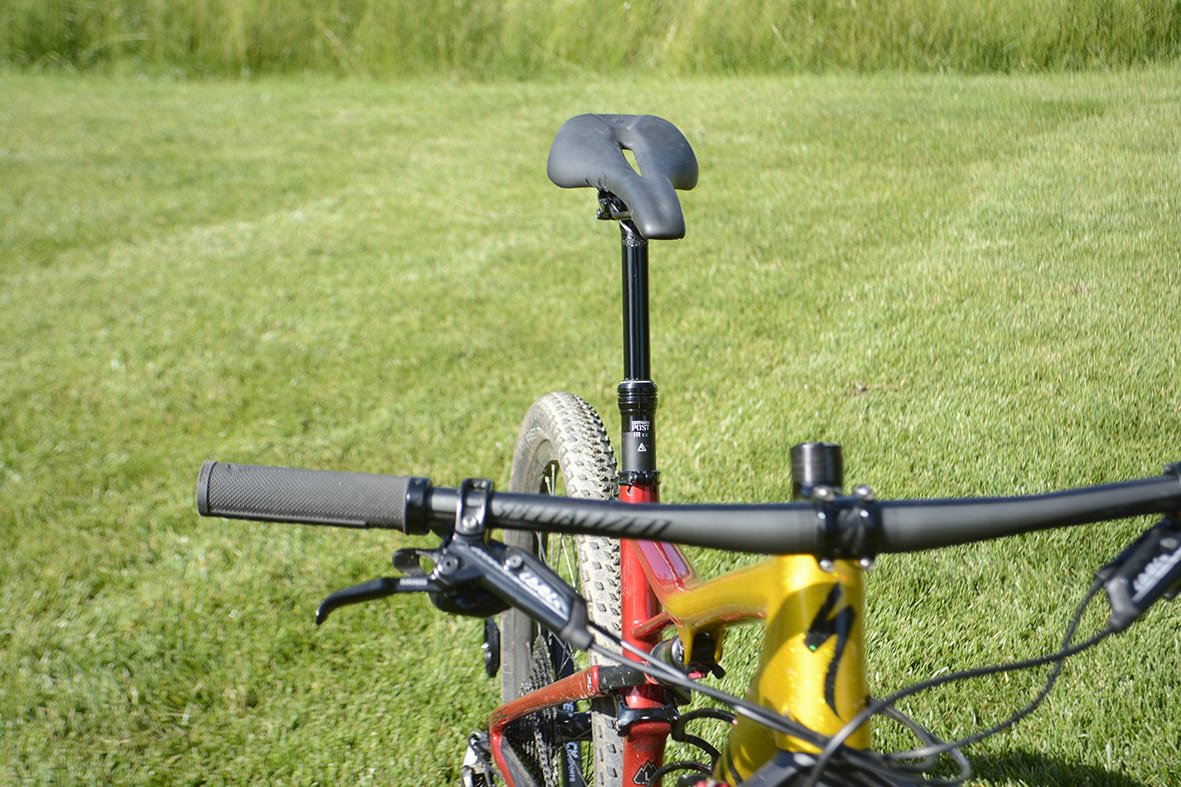
Drop Zone
The Epic’s seatpost diameter has shifted back to 30.9mm, representing a conscious decision to forego the added flex of a 27.2mm post in favour of allowing riders the opportunity to run a wider range of dropper posts. While Specialized’s Command XCM dropper is indeed 27.2mm, the industry standard is 30.9mm, so the change exponentially increases the number of options open to riders. This is a great move, and will certainly help the full spectrum of Epic owners to make the most of technical sections.
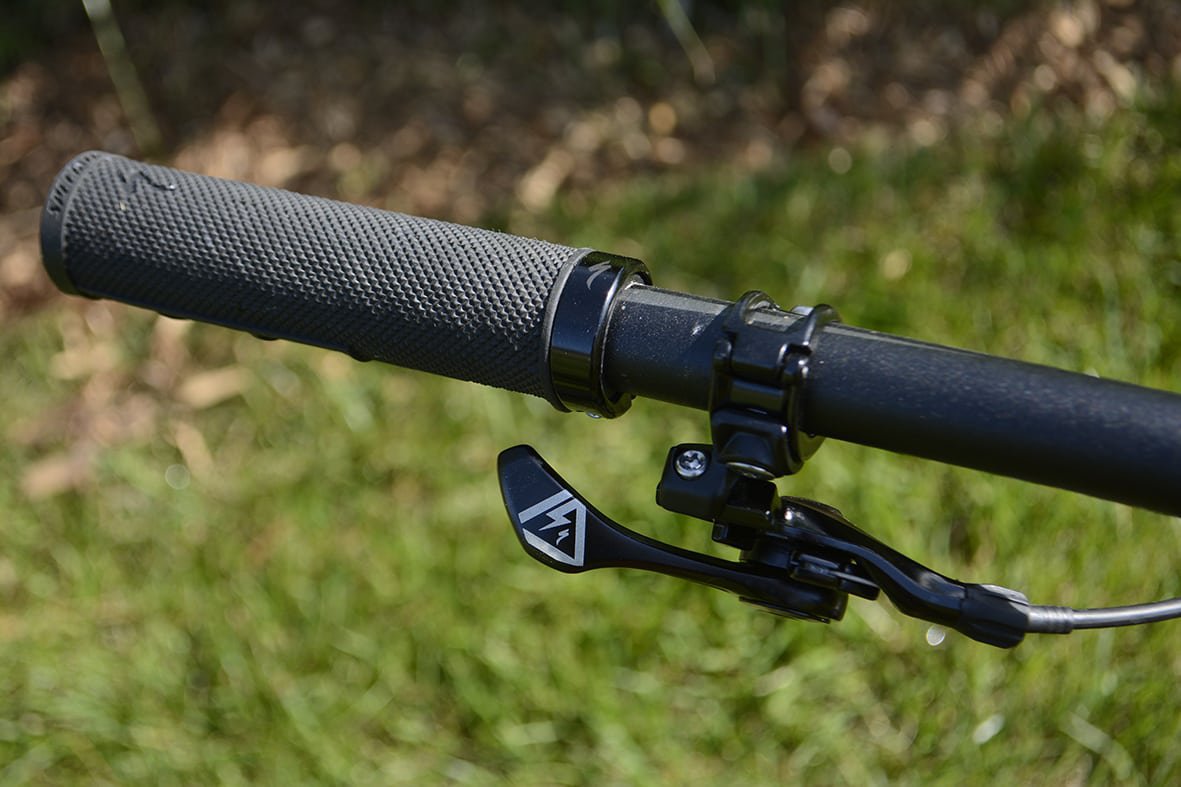
As all Epic frames are 1x only, the dropper-post lever can be tucked neatly beneath the handlebar.
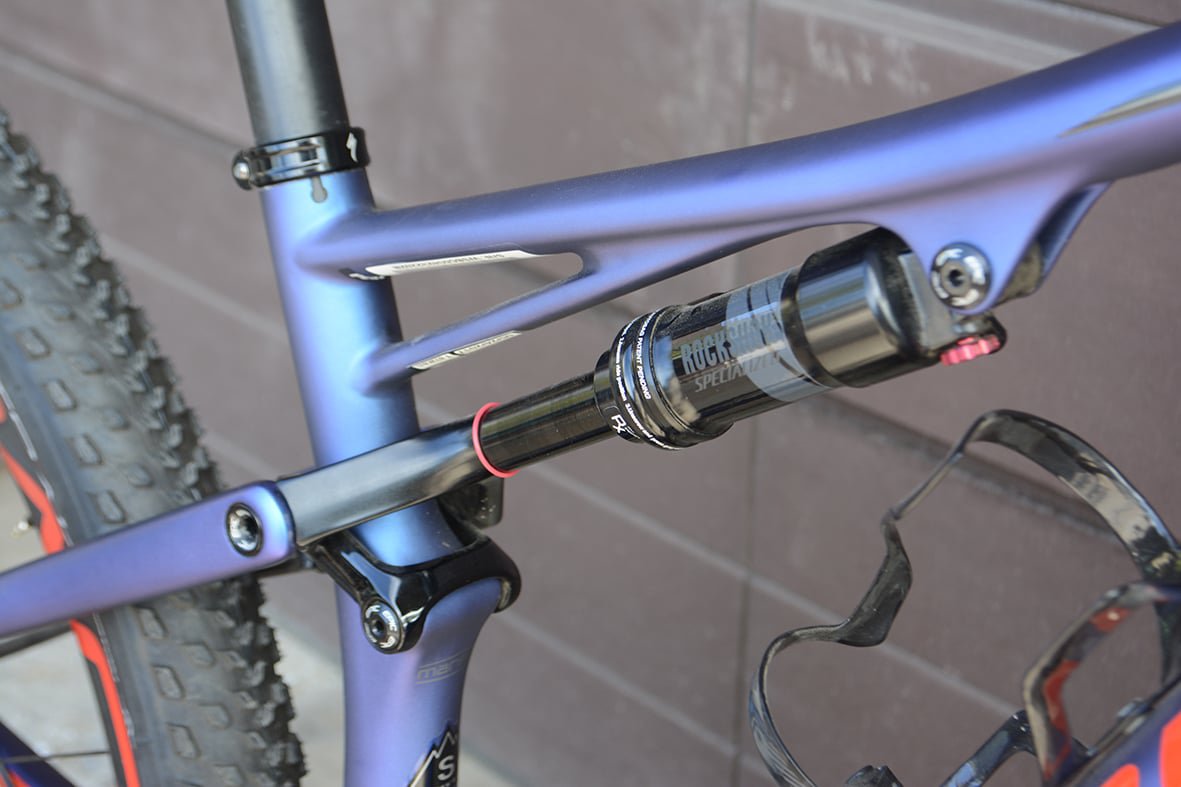
It’s Smarter
Like the frame it’s bolted to, Specialized’s updated Brain 2.0 hasn’t been revolutionised as much as tweaked, with noticeable improvements allowing 100mm of efficient travel.
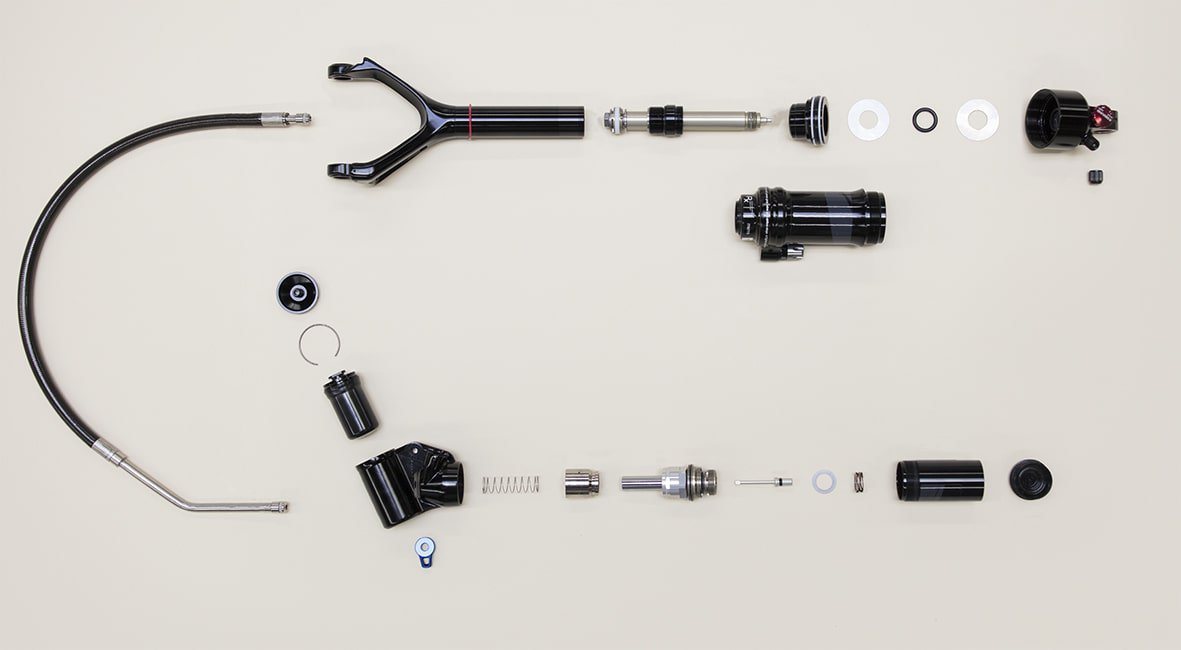
Momentum Carry
Mike McAndrews – the godfather of Brain technology, and a legend in the world of suspension – describes the major benefit of the updated system as ‘momentum carry’: the improved sensitivity of the Brain enables lightning-quick acceleration, but critically, smooths out technical terrain too, allowing riders to maintain momentum when it counts most.
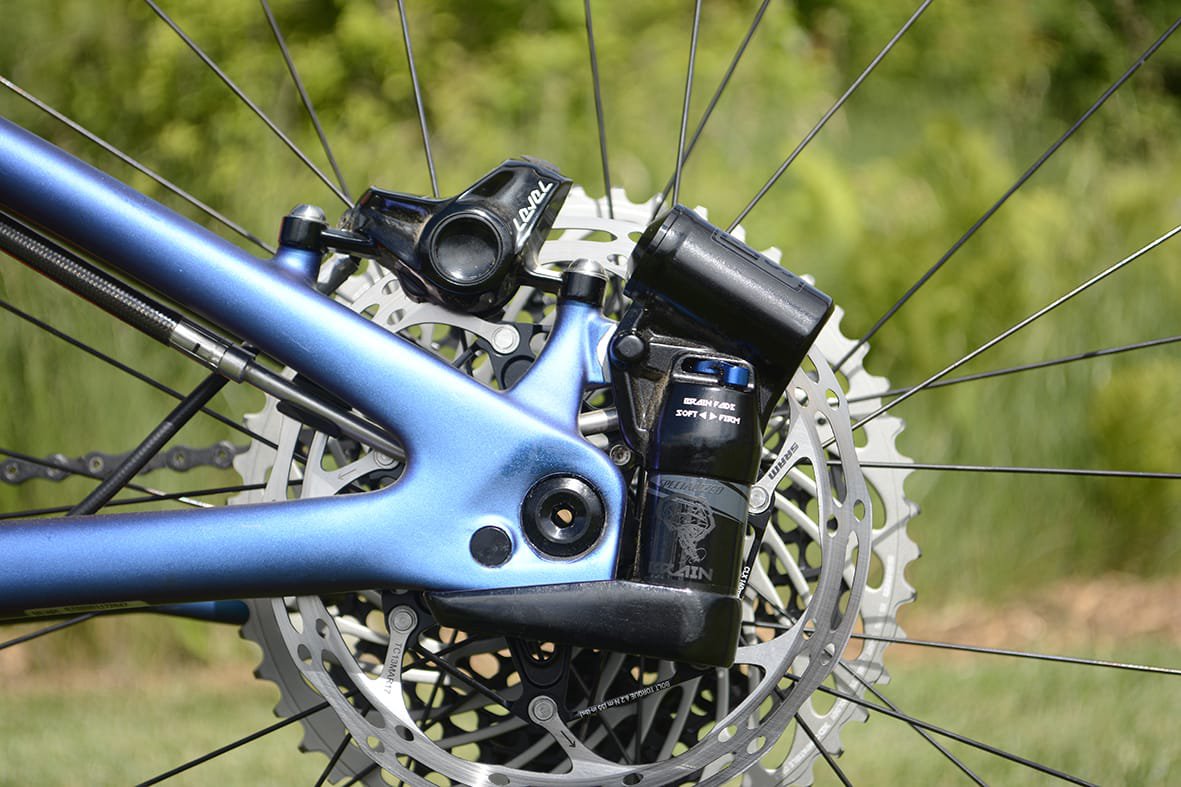
Brain 2.0’s enhanced momentum carry is derived from two major changes. Firstly, the Brain’s inertia valve – now positioned behind the axle on the non-drive side, with a ratio of just over 1 to 1 – is better able to detect movement, making it more sensitive to small bumps.
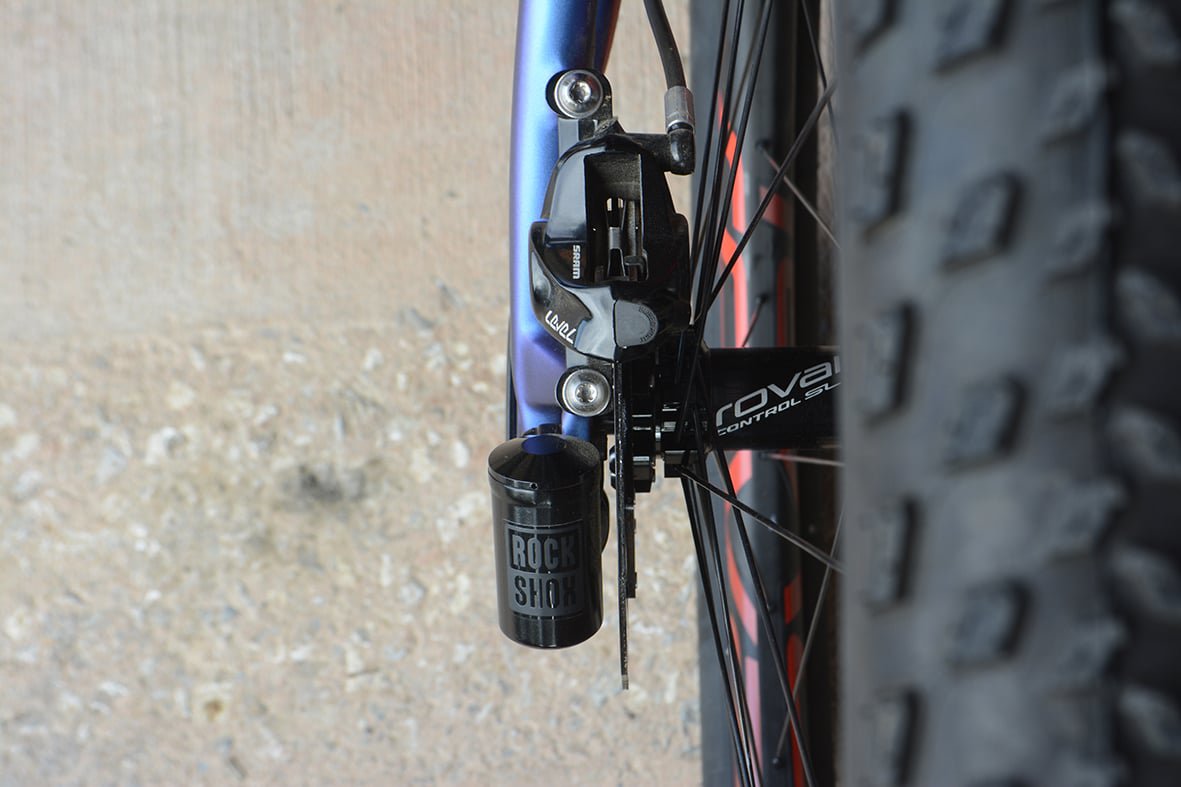
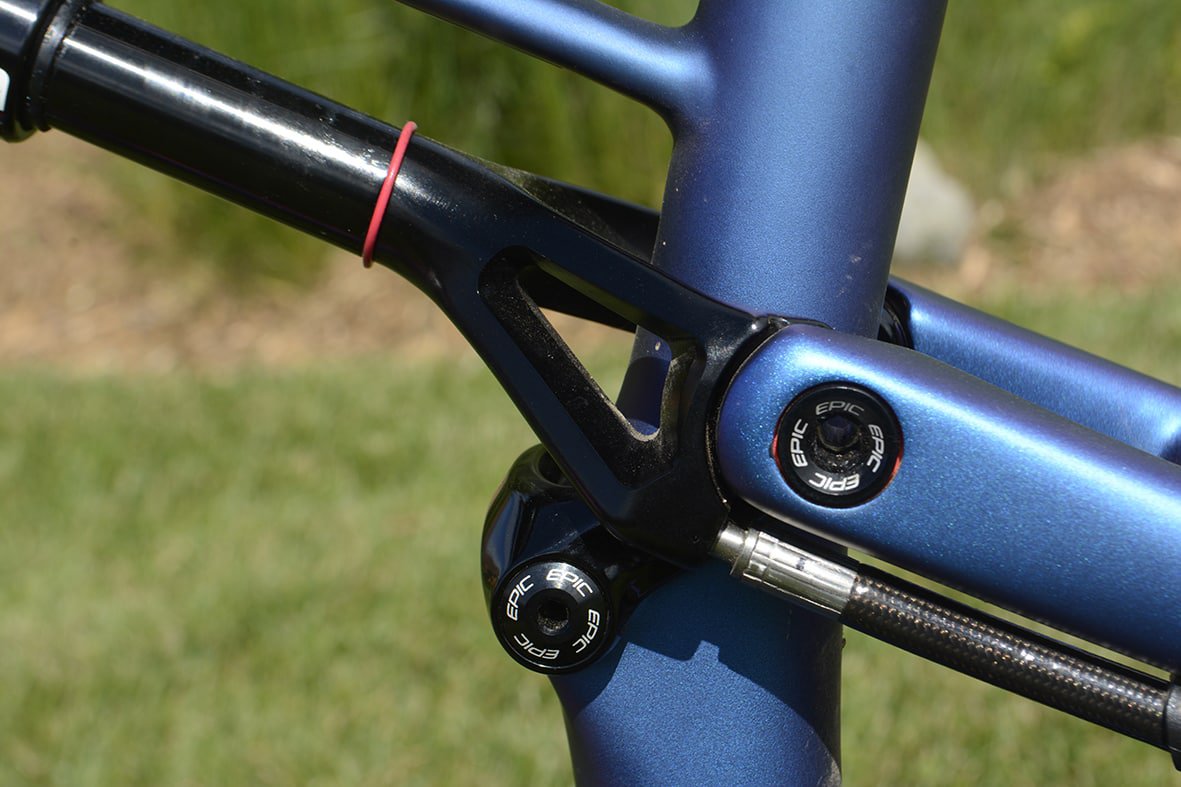
Secondly, Brain 2.0 allows for a more laminar flow of oil from the redesigned shock mount to the inertia valve, greatly reducing turbulence, which translates into smoother damping and a far more natural feel when compressing into the travel. Historically, says McAndrews, the Brain has felt a bit jerky; so every effort has been made to improve the flow of oil, making it smooth and consistent.
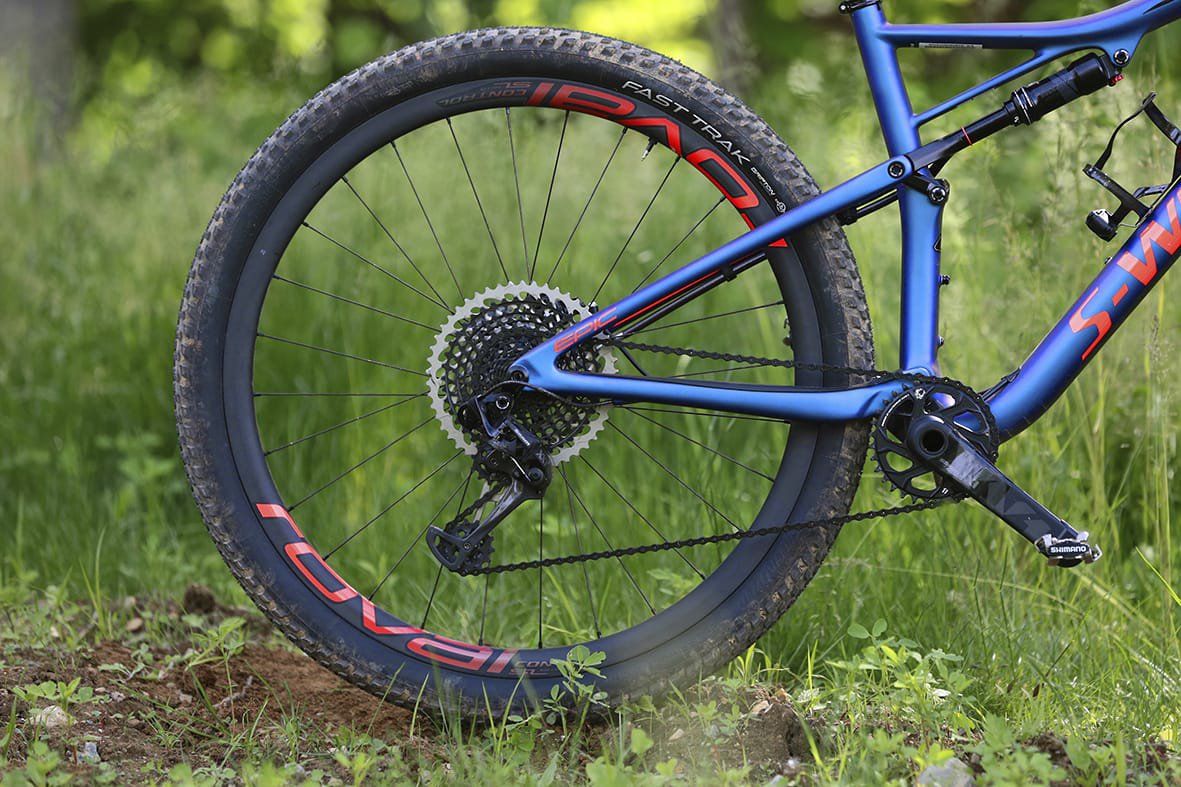
Goodbye FSR
The new position for Brain 2.0 also signifies the end of an era: that of Specialized’s FSR suspension design. The 2018 Epic forgoes the old FSR’s chainstay pivots in favour of a rear triangle that relies on flex – primarily in the seat stays, according to Gordon.
Pioneered by Cannondale and recently introduced by Scott, ‘flex-stays’ help to reduce weight by removing hardware (bearings, for example), as well as allowing the rear end to be stiffened.
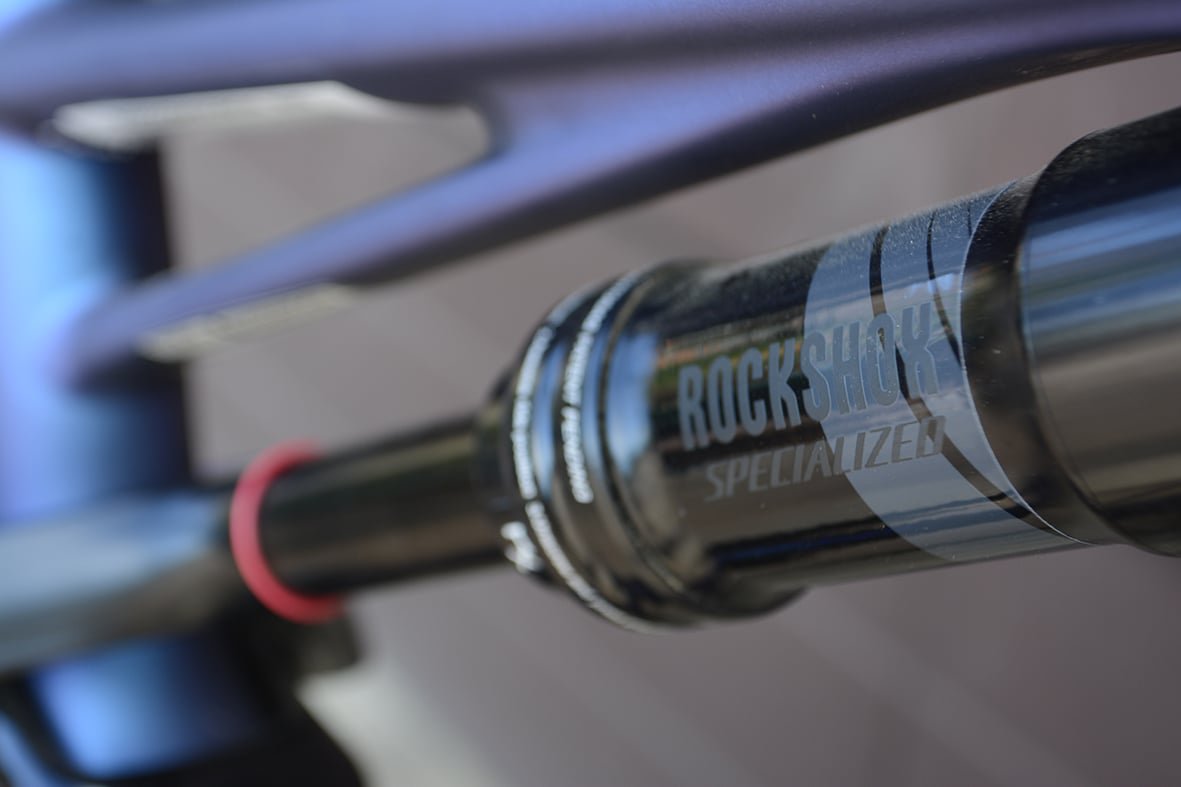
Another significant change for 2018 is the absence of Fox rear shocks. In future, all Specialized Brain technology will be fitted to RockShox suspension, front and rear.
It’s Faster
In the quest for improved stability, control and handling, Specialized have lengthened the Epic’s reach, shortened stem lengths, and slackened the head angle – without sacrificing any of its agility.
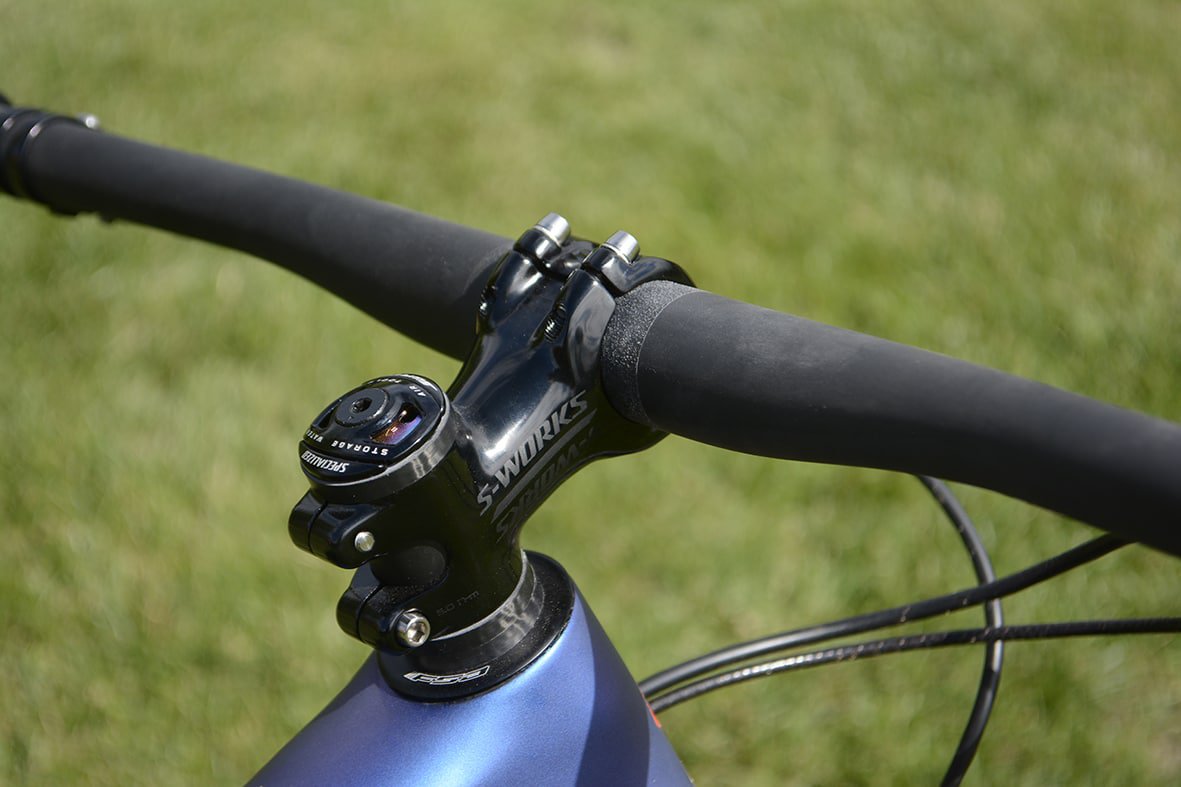
No More World Cup Geometry
A significant change in terms of the Epic’s chassis is the consolidation of geometries. Previous iterations included two geometries: the standard Epic, and a steeper, more aggressive ‘World Cup’ version that was infamous for being as twitchy as a ferret on a double dose of Red Bull.
New Generation Geometry
Reach has been lengthened by 10mm, 0 with the stem of each frame size being shortened by 10mm in turn. This allows the rider to benefit from a longer front centre without having to adjust their riding position, as the positions of saddle and handlebar remain unchanged from the previous Epic. Stem lengths for each frame size are: small 60mm, medium 70mm, large 90mm and XL 100mm.
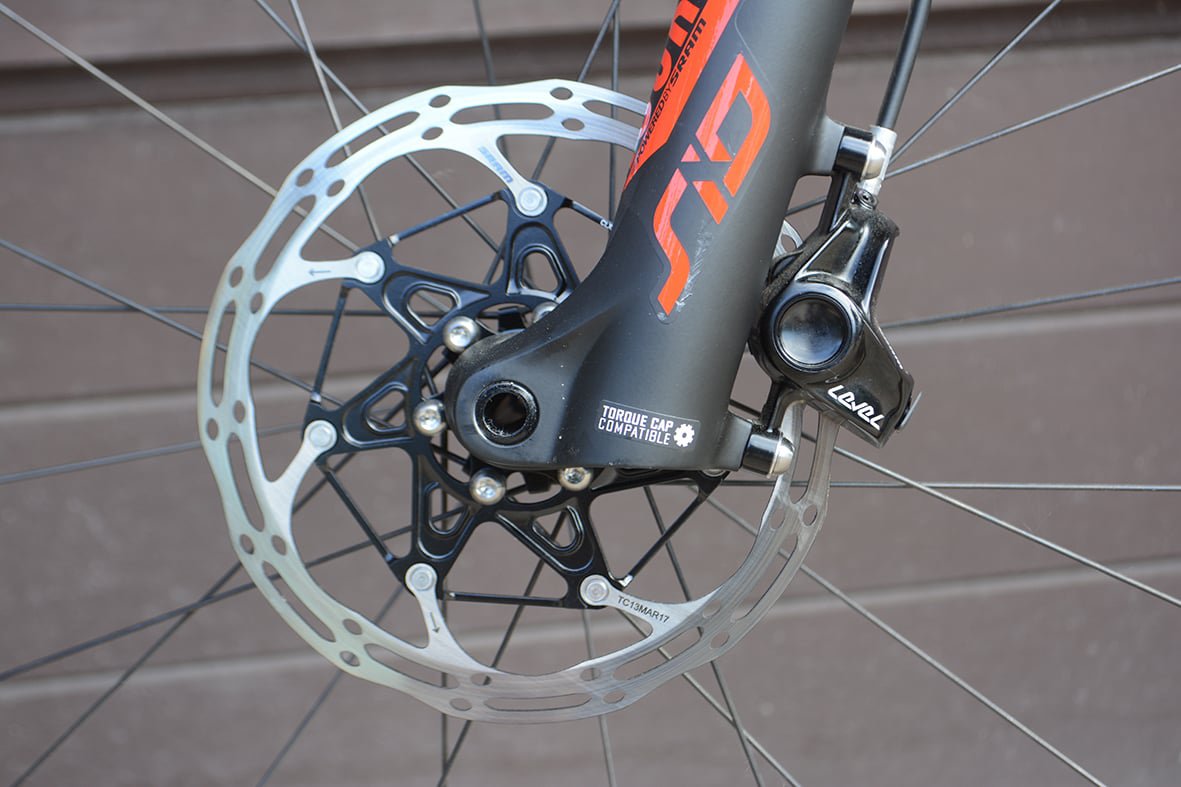
Product Manager Brian Gordon explains that where the Epic differs from the competition is in its proprietary 42mm fork offset, which has been brought in by 9mm. Coupled with a 1.5-degree slackening (compared to the previous World Cup model) of the head angle to 69.5 degrees, this keeps the handling lightning-quick, without being twitchy.
In essence, the 42mm offset brings the front wheel slightly closer, allowing the rider to keep more weight on the front tyre, which improves grip while also reducing front wheel ‘flop’ through tight turns. Additionally, the new offset reduces the fork’s ‘trail’, keeping handling sharp; while the slacker and longer front end improves – yes, you guessed it – handling and control.
The major changes to the 2018 Epic’s geometry, relative to the 2017 World Cup and Standard Epics:
| 2018 Epic | 2017 World Cup Epic | 2017 Standard Epic |
| Chainstays | 5mm shorter | 15mm shorter |
| Head Angle | 1.5 degrees slacker | 1 degree slacker |
| Frame Reach | 10mm longer | 15mm longer |
| Seat Tube | 0.75 degrees steeper | 0.75 degrees steeper |
| Fork Offset | 51 down to 42mm | 51 down to 42mm |
| Trail | 86 to 94 | 86 to 94 |
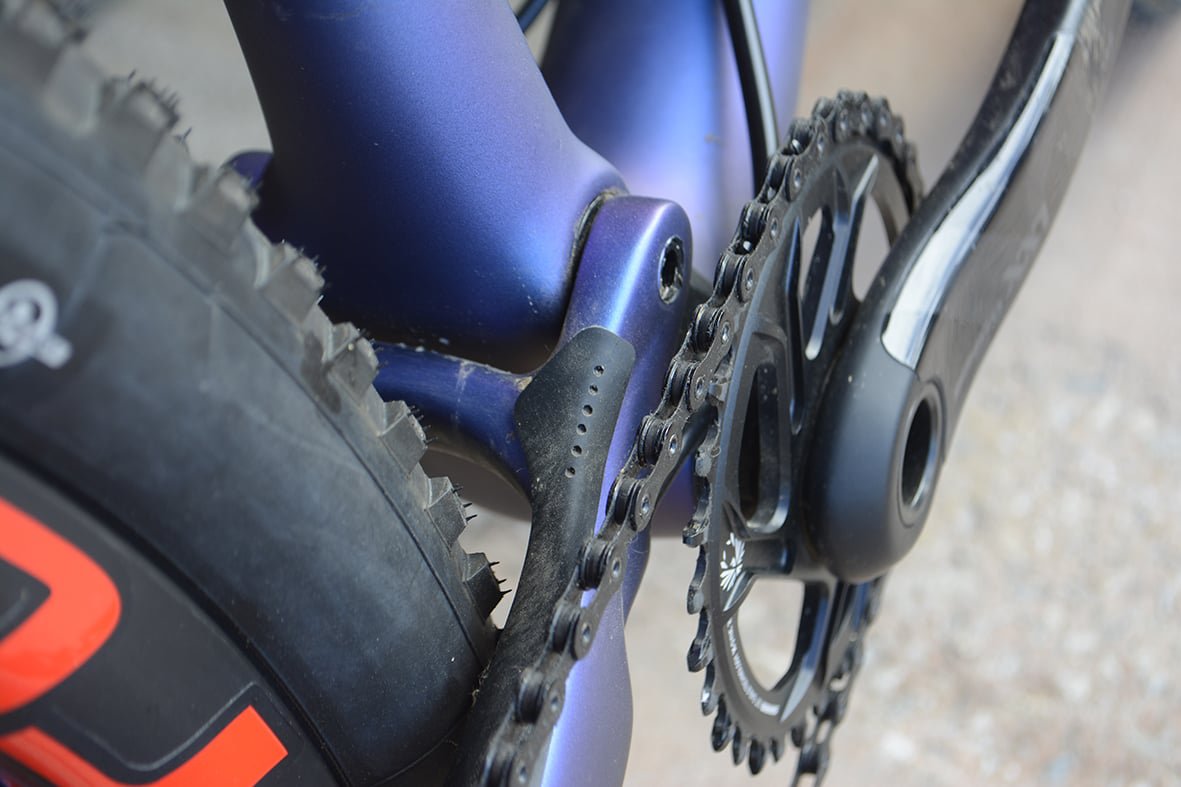
A Few Smaller Details
All 2018 Epic chainstays are 1x only, and can fit 28T to 38T chainrings. By removing the need for a front derailleur mount, Gordon says, they could shorten chainstay length to 438mm – which of course improves acceleration, and makes handling just that little bit snappier.
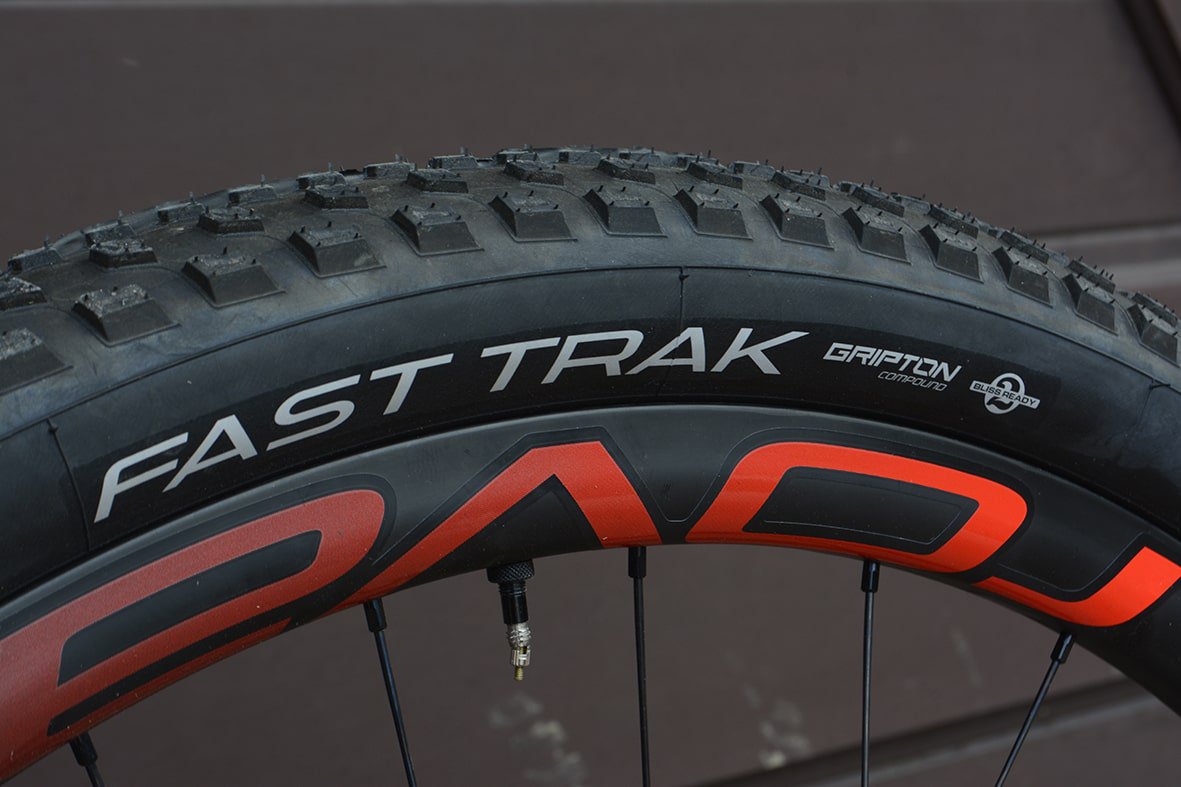
As expected, boost hub spacing has been introduced on the Epic. Our S-Works test bike was specced with a set of new Roval Control SL wheels with a 25mm internal rim width, providing a larger contact patch and surface area. It’s great to see a 2.3-inch specced up front for added grip and stability, with a 2.1-inch taking care of business on the back. In addition, for 2018 Specialized have introduced their ‘Gripton’ compound to their range of mountain-bike tyres.
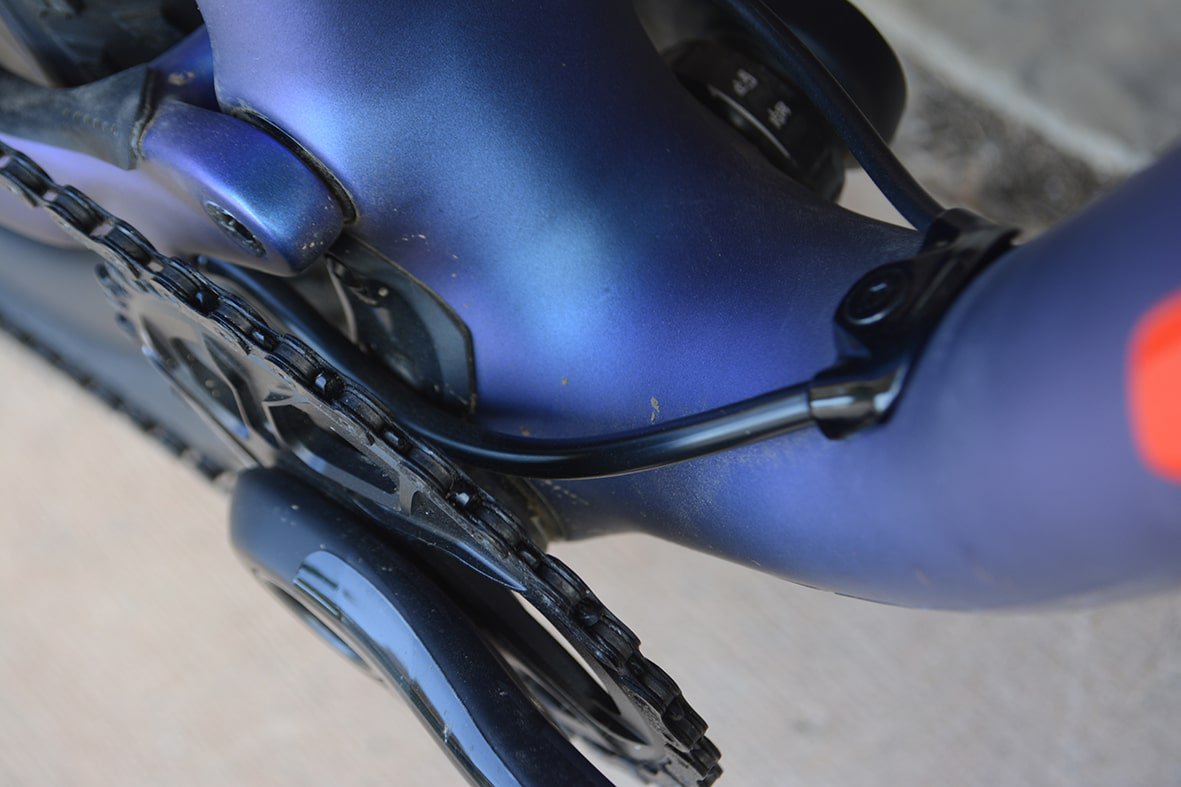
We noticed a protective sleeve on the gear cable as it transitions between downtube and chainstay; this helps to reduce ghost shifting, and any chance of wear and tear from making contact with your chain and/or chainring. Unlikely perhaps, but it’s good to have that added layer of protection.
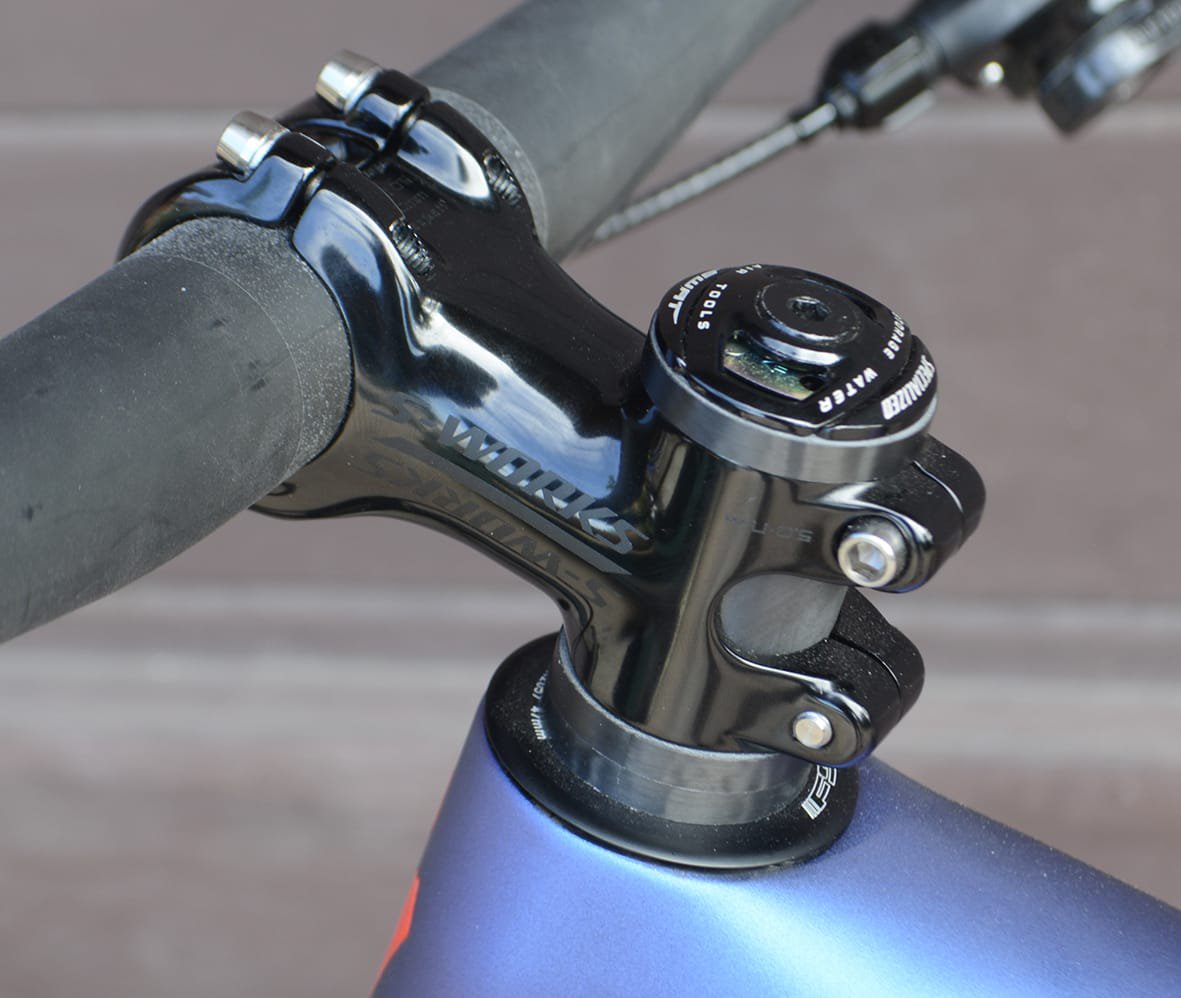
Allowing for a lower riding position as well as more room to tweak, the new Epic comes standard with a flush head-tube cap.
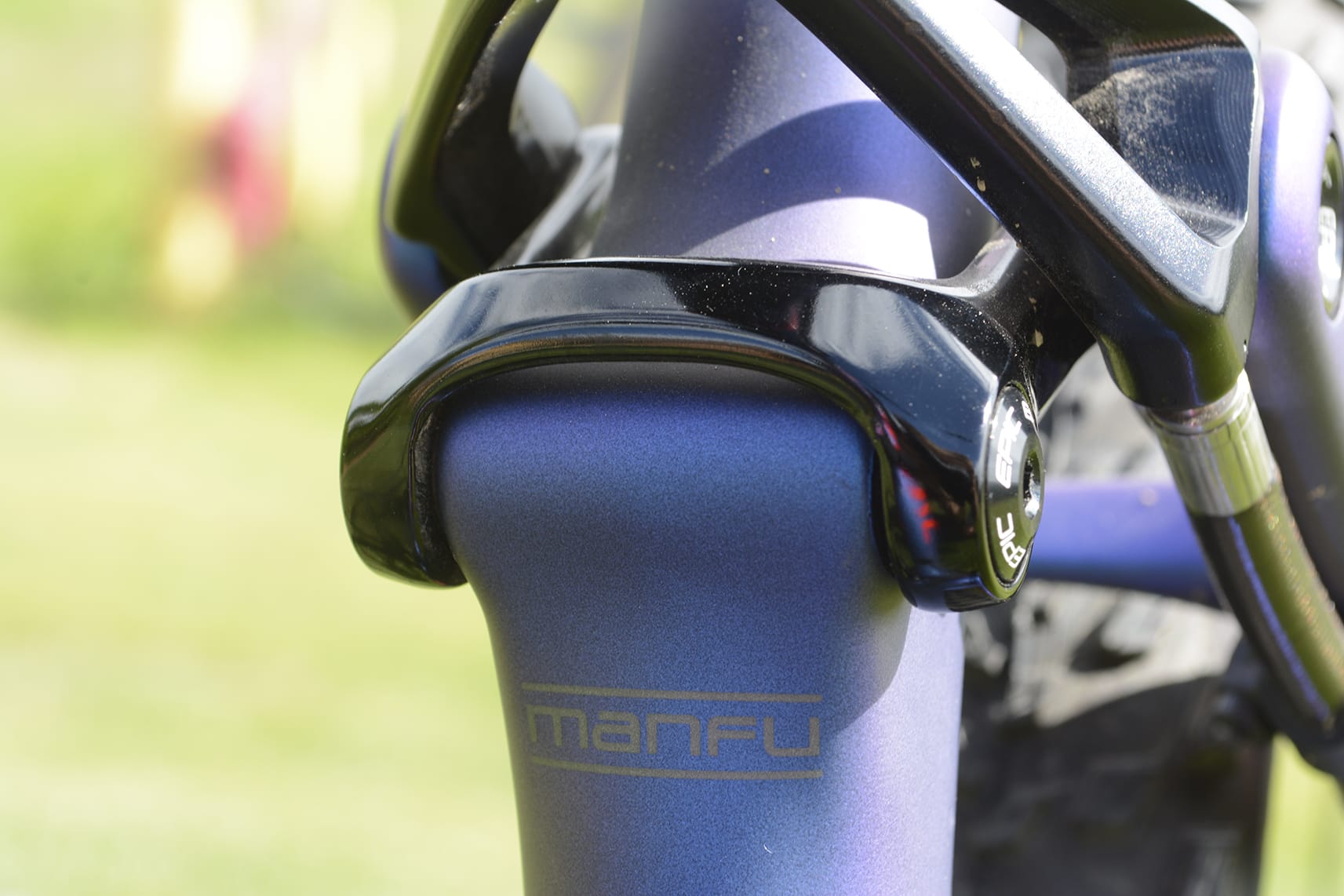
Despite the no-compromise design, it’s awesome to see some character on the S-Works frame, in the form of an inside joke to do with the Epic’s linkage: it looks similar to the Hulk Hogan-style moustache they say is called a ‘Manfu’.
The Ride
Looking back, a common criticism of Epics past was the twitchy front end, which didn’t inspire confidence at the best of times. When venturing off a gravel road, the Epic’s aggressive old-school geometry often translated into rider hesitation, which ultimately makes any experience sub-optimal.
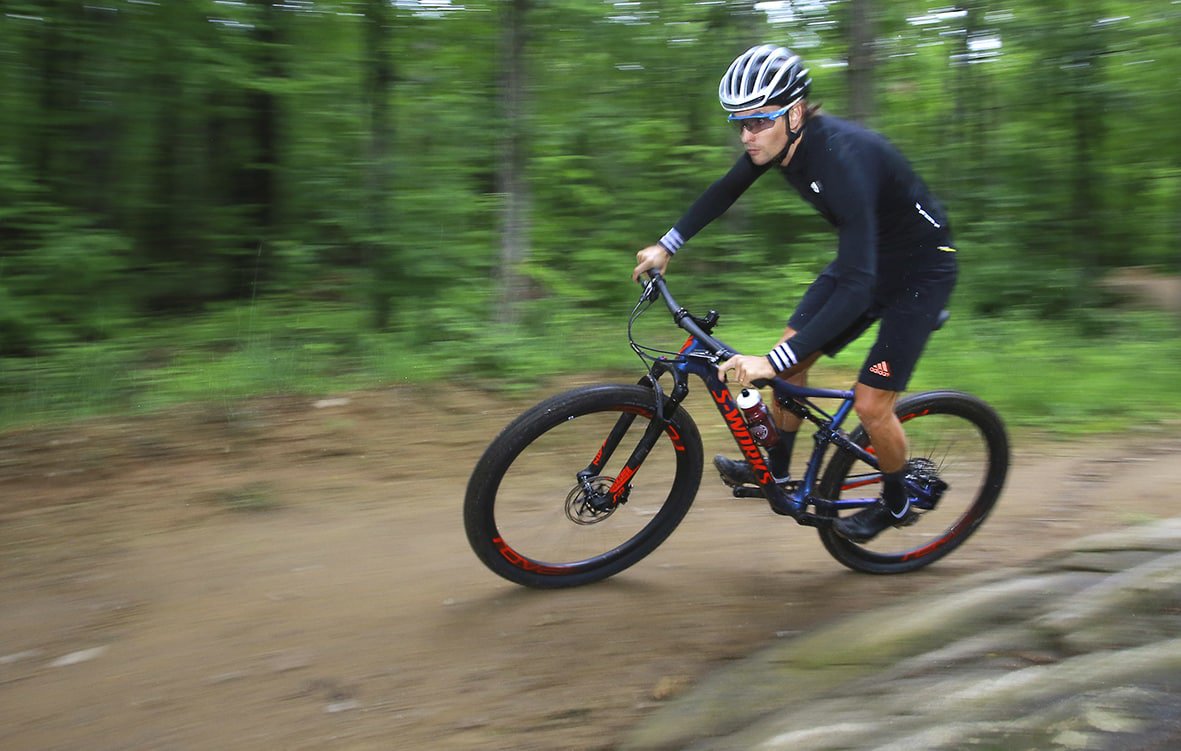
Three years in the making, the 2018 Epic has shed a considerable amount of weight, undergone Brain surgery, and received a welcomed tweak to the front end. On paper, these improvements read like the sound of champagne corks popping – not only on World Cup XCO podiums around the world, but also on local Strava segments and events throughout South Africa.
So how does the Epic perform in the real world? Is the new incarnation the perfect tool for the progressive racer? After three days riding the S-Works model, Bicycling’s answer is a resounding yes.

When threading the bike through tight, greasy rocks and roots, the handling responded effortlessly to quick changes in direction. The slippery conditions were no match for the high-volume 2.3-inch Fast Track rubber, supporting the theory that all riders – especially those who struggle technically – should be on at least a 2.25-inch front tyre.
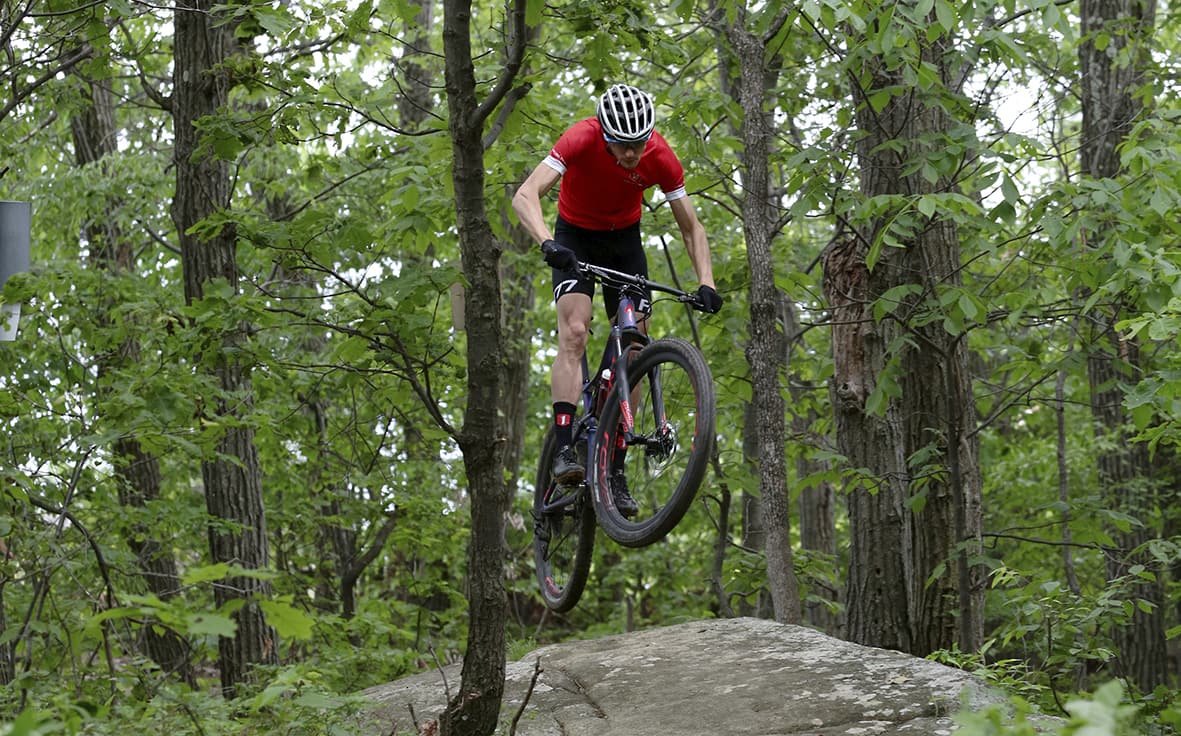
Going fast is where the Epic wants you to be. It’s still a boss on the ups, but now it can hold its own even on the downhills! Shooting downwards, I couldn’t believe the difference compared to the old model. The front wheel wouldn’t leave its line, tracking perfectly on many a drop-off and loose turn – both in the wet and in the dry. The handling has seen a big improvement, and that isn’t just marketing talk. Don’t be fooled though: the bike isn’t going to do the work for you. It will make you faster, but you still need to put in the effort.
Climbing and accelerating out of turns is where the Brain excels. It does all the thinking for you, soaking up the terrain while blocking out any pedalling feedback. Specialized’s approach used to be that the Brain should always be as firm as was humanly possible. On the S-Works we tested, the fork’s ‘firm’ setting was rock hard; however, McAndrews and his team have shifted their thinking for the rear, allowing slightly more ‘give’ in the firm setting for better maintenance of momentum.
We found this slight suppleness better able to react to the terrain, soaking up the initial impact more easily. Instead of you hitting a rock and bouncing over it, losing grip and control, the Brain 2.0’s inertia valve opens immediately, allowing your wheel to roll over the obstacle, which aids traction, efficiency and acceleration.
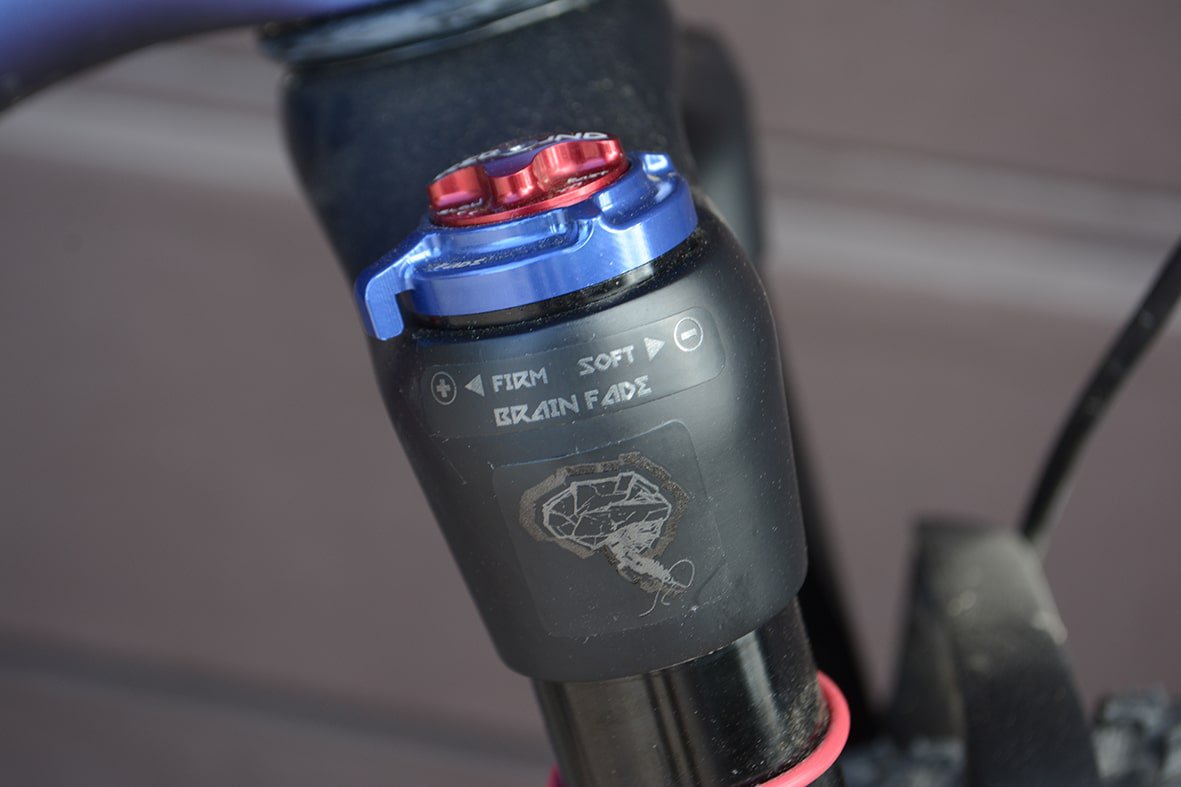
After toggling through the settings during the first day of testing, I found ‘fully open’ at the front and ‘fully firm’ at the rear to be the best combination. Opening up the front fork allows one to better negotiate obstacles such as rocks, roots and logs. This also holds for bunny-hopping.
The Epic’s unashamedly built for racers. One sign is that, the Brain essentially does the thinking for you, as it removes the need to open or close your front and rear lockout levers – for a racer, this sheds a degree of responsibility, allowing you to pay more attention to generating watts. And when precious seconds count, every advantage helps.
The only downside to the Brain is the ‘clunk’ you feel as the inertia valve reacts to the terrain it encounters. While it’s an unavoidable byproduct of the technology, the clunk has certainly been reduced. But if you prefer a more natural feel, then a model without a Brain might suit you better.
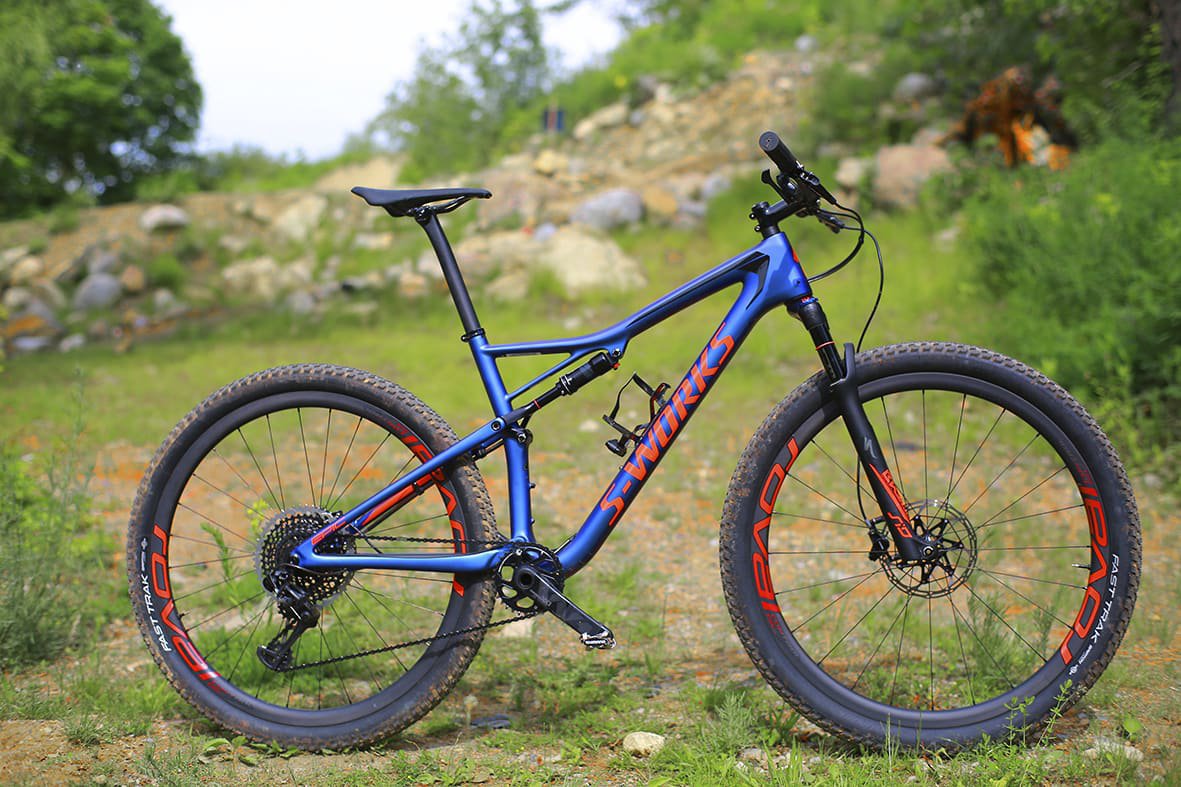
Our Verdict
The Epic has become a more capable package, and lost none of its speed. This makes it ideal not only for professional riders, but also for mere mortals with day jobs and less-than-razor-sharp technical skills.
READ MORE ON: first look marathon MTB Specialized XCO

